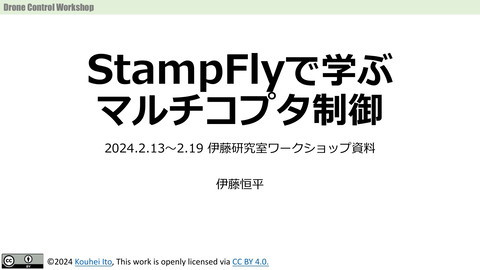On the Word Boundaries of Emergent Languages
164 Views
July 10, 23
スライド概要
Presentation slides used in the invited talk at SNL2023
関連スライド
各ページのテキスト
On the Word Boundaries of Emergent Languages Ryo Ueda 2023/06/29 @ SNL2023 The University of Tokyo
Self-introduction
Self-introduction name aff field Ryo Ueda (D1) Miyao Lab, The University of Tokyo Emergent Communication my homepage Interest How statistical properties of languages emerge? News pre-print • Organized a session at JSAI2023 • Released a pre-print https://psyarxiv.com/rz5ng 1/20
Paper I introduce today
Paper I introduce today Today, I would like to introduce this paper: accepted to ICLR2023 (held in Kigali, Rwanda) 2/20
Pictures in Rwanda 3/20
Overview of our paper 1/2 Research Question Harris’s articulation scheme (HAS) holds for emergent languages Emergent languages have meaningful words Emergent Language HAS communication protocol emerging among agents statistical property on words in natural language Results Implication HAS does :not hold for emergent languages :::: Emergent languages lack meaningful words 4/20
Overview of our paper 2/2 Research Question Harris’s articulation scheme (HAS) holds for emergent languages Emergent languages have meaningful words HAS is (anyway) applicable to emergent languages to obtain segments But does it really make sense That’s the problem 5/20
Background: Emergent Language
Background: Emergent Language Emergent Language Commpunication protocol emerging among agents a.k.a Emergent Communication Typical motivations in this area 1. Develop interactive AI [e.g., Lazaridou et al., 2018] 2. Simulate language evolution [e.g., Kirby, 2001] 3. :Clarify diff between emergent/human languages ::::::::::::::::::::::::::::::::::::::::::::::::::::::::::::::::::: [e.g., Chaabouni et al., 2020] 6/20
Signaling Game Typical Environmental Setting in this area Signaling Game [Lewis, 1969] Attribute-Value Setting #attributes natt ∈ N, #values nval ∈ N 7/20
Background: Harris’s Articulation Scheme (HAS)
Next character uncertainty and word boundaries Example: “natural” n... nat... natura... natural... I have no idea on the next The next may be “u” or “i” The next must be “l” Harris’s hypothesis [Harris, 1955] Next character gets uncertain again there tends to be a word boundary there Harris’s Articulation Scheme (HAS) [Tanaka-Ishii, 2021] Information-theoretic re-formulation Uncertainty as Entropy 8/20
Conditional Entropy & Branching Entropy 1/2 A set of character sequences Σ∗ , a sequence x1:n = x1 · · · xn ∈ Σ∗ , a random variable X1:n = X1 · · · Xn over Σ∗ Conditional Entropy H(n) Branching Entropy h(x1:n ) H (Xn+1 |X1:n ) Its intuition H(Xn+1 |X1:n = x1:n ) Its intuition next character uncertainty next character uncertainty in a specific context on average ::::::::::::::::::::::::::: ::::::::::::::: Conditional Entropy is the average of Branching Entropy P ∵ H(n) = x1:n ∈Σ∗ p(x1:n )h(x1:n ) 9/20
Conditional Entropy & Branching Entropy 2/2 Conditional Entropy Branching Entropy Their behavior in natural languages Conditional Entropy H(n) monotonically decreases vs Branching Entropy h(x1:n ) repeatedly falls and rises In natural languages, uncertainty decreases on average, but jitters in specific contexts 10/20
Harris’s Articulation Scheme (HAS) Harris’s Articulation Scheme (HAS) [Tanaka-Ishii, 2021] There tend to be word boundaries at the increasing points of Branching Entropy h Branching Entropy h decreases on average (∵ Conditional Entropy H monotonically decreases), but sometimes increases There tend to be a word boundary 11/20
Problem Definition
Problem Definition 1 Re: Research Question HAS holds for emergent languages? 12/20
Problem Definition 2 Re: Research Question HAS holds for emergent languages? Three questions to answer: In emergent languages... Q1 Conditional Entropy monotonically decreases Q2 Branching Entropy jitters Q3 Tentatively obtained segments are meaningful Entropies behave like natural languages? Obtained segments are really “words”? Q1, Q2 Q3 13/20
Problem Definition 3 Tentatively obtained segments are meaningful? Difficulty of Q3 No ground truth data of word segmentation Emergent languages have words in the first place? To mitigate this issue, replace Q3 with the following questions: Additional questions alternative to Q3 Q3-1 #attributes ∝ the number of boundaries Q3-2 #values ∝ the number of distinct segments Q3-3 segment-level compositionality > character-level compositionality 14/20
Problem Definition 4 Intuition of Q3-1 #attributes ∝ the number of boundaries For Q3-2 & Q3-3, refer to our paper! 15/20
Experimental Results
Experimental Results To Q1, Q2, & Q3 Q1 Conditional Entropy H monotonically decreases? YES Q2 Branching Entropy h jitters? YES Q3 Tentatively obtained segments are meaningful? Probably NO Alternatives to Q3 Q3-1 #attributes ∝ the number of boundaries? Q3-2 #values ∝ the number of distinct segments? Q3-3 segment-level compositionality > char-level compositionality? NO for all 16/20
Summary
Summary Research Question Harris’s articulation scheme (HAS) holds for emergent languages Emergent languages have meaningful words Emergent Language HAS communication protocol emerging among agents statistical property on words in natural language Results Implication HAS does :not hold for emergent languages :::: Emergent languages lack meaningful words 17/20
Additional Remarks
Entanglement and Disentanglement “Emergent languages have meaningful segments” implies... Disentanglement of Segments 1-to-1 correspondence between attributes/segments Segments are disentangled Entanglement of Characters Segments can be obtained via characters’ entropy Characters are entangled (statistically correlated) 18/20
References i Rahma Chaabouni, Eugene Kharitonov, Diane Bouchacourt, Emmanuel Dupoux, and Marco Baroni. Compositionality and generalization in emergent languages. In Dan Jurafsky, Joyce Chai, Natalie Schluter, and Joel R. Tetreault, editors, Proceedings of the 58th Annual Meeting of the Association for Computational Linguistics, ACL 2020, Online, July 5-10, 2020, pages 4427–4442. Association for Computational Linguistics, 2020. doi: 10.18653/v1/2020.acl-main.407. Zellig S. Harris. From phoneme to morpheme. Language, 31(2):190–222, 1955. ISSN 00978507, 15350665. Simon Kirby. Spontaneous evolution of linguistic structure-an iterated learning model of the emergence of regularity and irregularity. IEEE Trans. Evol. Comput., 5 (2):102–110, 2001. doi: 10.1109/4235.918430. 19/20
References ii Angeliki Lazaridou, Karl Moritz Hermann, Karl Tuyls, and Stephen Clark. Emergence of linguistic communication from referential games with symbolic and pixel input. In 6th International Conference on Learning Representations, ICLR 2018, Vancouver, BC, Canada, April 30 - May 3, 2018, Conference Track Proceedings. OpenReview.net, 2018. David K. Lewis. Convention: A Philosophical Study. Wiley-Blackwell, 1969. Kumiko Tanaka-Ishii. Articulation of Elements, pages 115–124. Springer International Publishing, Cham, 2021. 20/20







